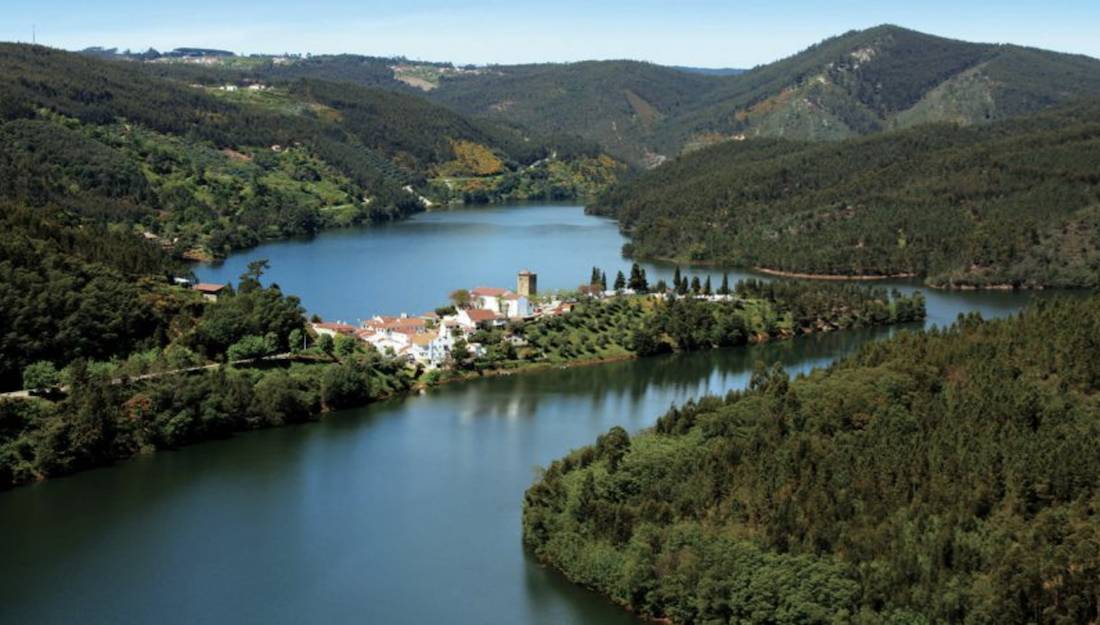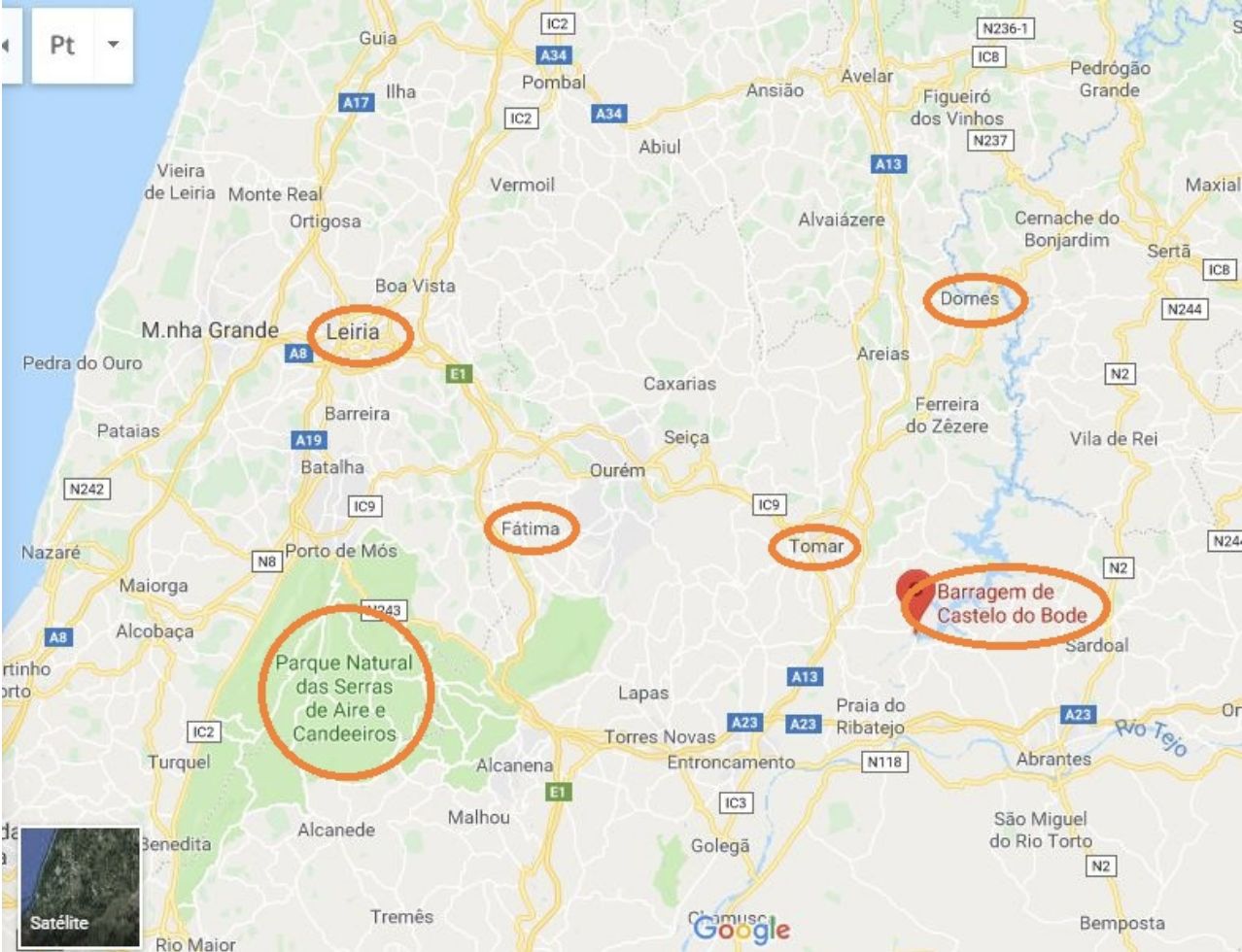
Dornes: Mystery & History
Remember my last post about Dornes? Well, sometime after that school trip my curiosity had faded a bit because of all the things that inevitably got in the way, the biggest one joining college. Besides, it was the start of the internet era. Do you still remember what we had to do to research something? We needed to use those objects called books. And relying only on books for research seems today, very little, compared to all the information we can now access through the internet. Using books to research about Dornes was virtually impossible.
Although Dornes itself never showed up anywhere it seemed to me that there were a lot of things *around* Dornes. From the so-called Templar town of Tomar (and the Convent of Christ with all its mysteries) to the Serra de Aire e Candeeiros, to Fátima and, even, the Castelo de Bode dam. There were many bits and pieces of information that I actually already had but it was only a few years ago that I tied them all together – well, sort of.
Growing up I was lucky to have free access to many different types of books, not just at home but also in the library. I fondly remember the look on the library lady’s face when 12-year old me brought home a book by Russian anarchist Mikhail Bakunin! Anyway, I got to read a book called “Extraterrestrial Intervention in Fátima” (my translation of the original Portuguese title “Intervenção extraterrestre em Fátima”) by authors Fina d’Armada and Joaquim Fernandes. Whether or not you believe in extraterrestrial intelligence, and if you know enough Portuguese, I highly recommend reading this book to have access to a lot of details the Church left out about the whole Fátima phenomenon. In fact, the topic of UFO sightings seems to be fairly common when talking about this region. One of the most well known such sightings in Portugal happened in 1977, over the Castelo de Bode dam (see map below) and it involved an Air Force Pilot, no less.
Fast forward some years after my first visit to Dornes and we’re in the early 2000s. Almost everybody had a digital camera, which meant photos of beautiful and not very well known places in Portugal started flooding the internet. And guess what: Dornes was among those places. That meant there was now much more information about its origins.
When you look up Dornes you will inevitably come across references to its tower, built by order of Gualdim Pais, Grand Master in Portugal of the Order of Knights Templar, in the 12th century. With an unusual pentagonal layout, the tower has various military symbols on the edge of the doorway, because of its former defensive function. Later, in the 16th century, when things were much more peaceful and Portugal was focusing on the Atlantic ocean, it was adapted into a belltower for the neighbouring mother church.

It’s easy to see why the spot had been chosen: it stands on top of a small hill, where a Roman tower used to be, and from there you can observe the whole area. Probably, as was the case with other Roman sites in the Iberian Peninsula, there had been people there before the Romans arrived.
So far, the whole aura surrounding Dornes was mysterious enough but not “magical”.
It wasn’t until a couple of years ago that I found the final piece of information. I was looking up something on the internet when, you guessed it, I came across Dornes again. Cutting a long story short, some people believe that Dornes (not the town itself, but a spot in the area) is a sort of energetic portal connecting to an intraterrestrial place called Lys, having to do with inner healing and profound spiritual transformation, preparing the way for a “New Era”. Before you say this was invented by some megalomaniac Portuguese, they believe there are such places in other parts of the world, too.
Now, I could speculate endlessly about this, but let’s just sum up a few points: Lys reminds me of both the “fleur-de-lis” symbol and the river Liz. The river goes from a point between Batalha and Leiria, running through the latter, eventually reaching the ocean. You can see Leiria’s location on the map below. The symbol of the “fleur-de-lis” is very often associated with the Virgin Mary who happens to have a big sanctuary in… Fátima!

Now, it’s interesting to remember something. The 3 shepherds claimed to have had seen a beautiful girl, more beautiful than any other girl or woman they had ever seen before or after. That same girl never said she was the Virgin Mary nor was she dressed in the way Mary usually is depicted (this is all based on the original accounts from the children and which you can read about in the book I mentioned above).
Fátima is close to the Serra de Aire e Candeeiros, one of Portugal’s hotspots for UFO sightings (remember it stands for Unknow Flying Object, nobody’s talking about little green men here!) and the Castelo de Bode dam, which I mentioned above.
Are all these bits of information simple coincidences or do they actually tie together somehow? I wonder if the old Latin teacher knew anything about this. I’m sure he knew about the Templar influence and importance in the region but what else, if anything, did he know about? Did he really believe in a sort of energetic portal in the area? What if he had just played a prank on me?
This blog was written by our resident blogger and all-time Portuguese legend Catia Lima
